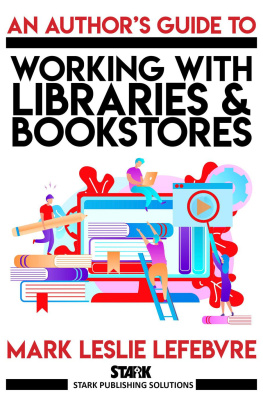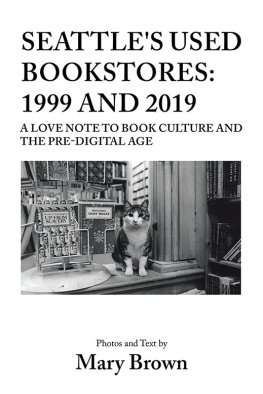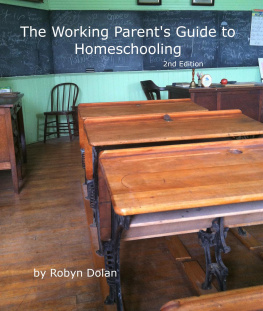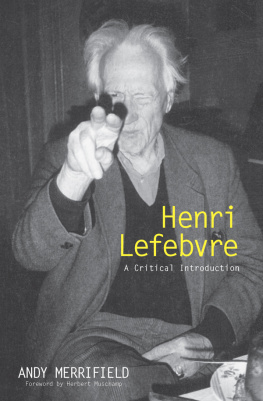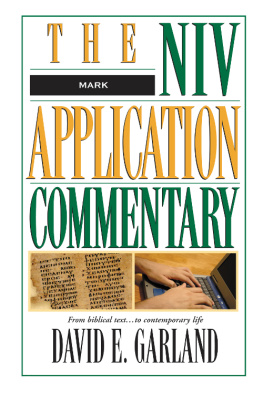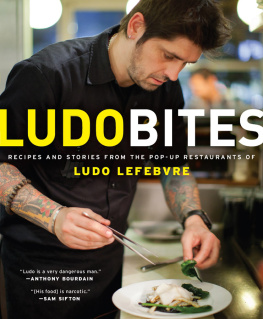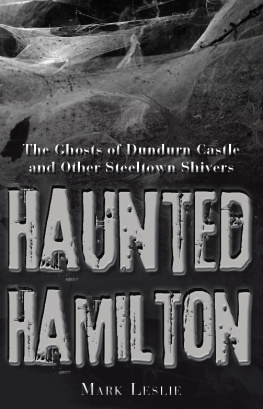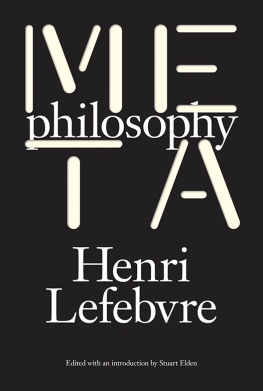AN AUTHORS GUIDE
TO WORKING WITH
LIBRARIES &
BOOKSTORES
Mark Leslie Lefebvre

Stark Publishing Solutions
WORKING WITH BOOKSTORES
IN 1992, THE same year that I graduated from Carleton University in Ottawa with my Honors Degree in English Language and Literature, and also saw my very first short story in print, I took my first part-time job as a bookseller.
My life-long passion for books and for writing seemed to be gestating nicely.
A part-time seasonal position in a bookstore for the Christmas season was the first of many stepping stones that I made throughout the book industry.
Between 1992 and 1999 I worked in five different bookstore locations in Ottawa and Hamilton Ontario, learning all about the front line of the retail book trade; from customer interactions, to managing inventory stock and personnel, working with publishing sales representatives, and the logistics of receiving, stocking, and returning books.
In 1999 I moved to work for Chapters Online, Canadas first major online bookstore. There I learned about the importance of accurate and efficient metadata, the information that feeds to and from publishers, as well as the logistical operation for managing the data and processes for Canadas largest book warehouse, and the challenges of a 24/7 online bookstore operation.
That role led to working at the head office of Chapters, which was bought by and absorbed into Indigo Books and Music, Inc. There, I continued to work at processing, importing and strategically sharing the critical information needed about books to feed both an always open online bookstore, but also the needs of the head office book buyers and the operation of putting stock into hundreds of big box and smaller mall stores across the country. Among the wonderful learnings there, I spearheaded the creation of an online tool that would allow smaller publishers the ability to work with Canadas largest bookseller despite these publishers not having an IT department or the technical ability to provide the data in the fully automated data industry standard terms.
In 2006, I moved back to the front line of bookselling, this time managing the book operations for an academic bookstore at McMaster University. In many ways, this part of the book industry was completely new and different than the one I had grown up on, so I relished learning about an entirely new side of the book industry, including the fundamental differences of the way that textbooks and academic reading material is sourced, bought and sold. In addition to the usual shipping and receiving, inventory management, and metadata fields, there were entirely unique data fields needed for additional purposes of faculty members needing to share required and optional reading lists to classrooms. I also learned about the used book business, and got my first taste at running a printing operation by leveraging an in-store print on demand business using an Espresso Book Machine.
In 2011, I was hired by Kobo, Canadas scrappy little digital book upstart, and tasked with coming up with a solution that would allow Kobo to work with self-published authors. It was a parallel to the online system I had built many years earlier for small publishers wanting to work with Chapters/Indigo; but this time it wasnt for the information required to order, stock and sell physical books online in Canada, or for shipping to one of the chains stores, it was for the ingestion of both metadata and the actual eBooks themselves for retail sale to a global market.
In 2018, I applied all the things I had learned about empowering independently published authors at Kobo and began a part-time contract position with Draft2Digital , an Oklahoma based company that distributes eBooks to all the major retail and library systems.
All this is to say that, my experience, since 1992, has allowed me a plethora of insights into the logistical, operational, and functional operations of almost every type of bookstore.
Compressing all that info gathered over decades into a relatively short book is a challenge that I dont take lightly.
But I have done my best to filter it down to the things that I think are important for an author to understand for working with various types of bookstore environments.
In addition, I have made every effort to divide this chapter into segments to perhaps match the type of specific information you might require. This should allow you to skip things you dont need to worry about such as, if you have a handle on the basics of listing your books and move on to another area that is useful to you at the particular stage you are at in your own unique author journey as it relates to bookstores.
Ideally, if it all works as intended, when you finish with this chapter, you will be fully equipped and confident in your own ability to interact and engage with bookstores efficiently, effectively and in a professional manner.
T he first few sections that follow are going to focus on the very basics of listing your books. They arent going to get into any specific how-to details.
This book is not going to explain:
- How to find an agent or publishing within traditional publishing
- How to do any of the specific steps of setting up your book
- How to find a good editor or a book cover designer for your book
- How to get an ISBN (or the debate of owning your own VS using ones assigned by a distributor/retailer)
- Any of the costs or mechanics associated with either of the previous two points above
There are plenty of books and free online resources out there that can do many of these things for you, and there will also be links to resources in the back of this book to some of them.
However, if you are at the early phase of wanting to understand the basics of how it works for an author to get their eBook or their print book listed with bookstores, this section should be a useful primer for you.
A s mentioned, this is going to be a high-level overview of how you can get your books listed in bookstore catalogs.
First, if you are a traditionally published author, then that publisher likely has warehousing, and has either direct retail sales channels relationships or is partnered with a distribution warehouse and/or sales force that will ensure your book is listed as available to bookstores. They likely are set up to sell their books through Ingram or Baker and Taylor, which are two of the largest English language wholesalers of print books that bookstores can order from.
Next page
